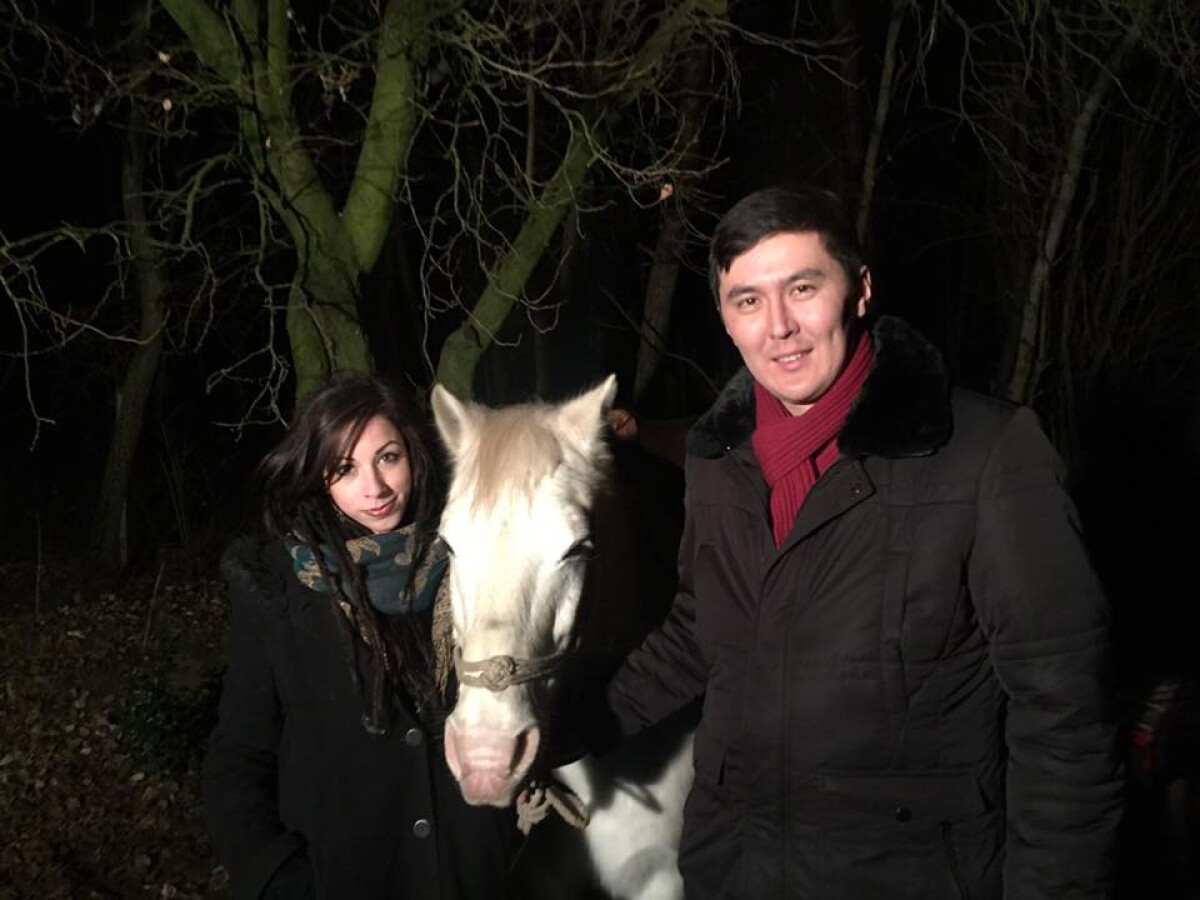
Commonness of Kazakhs and Hungarians that comes from common sources of nomadic steppe cultures is not only in horses. A Hungarian Zhannet residing in the city of Szeged, Hungary is interested in the history of ancient Kypchaks. About that on his Facebook page wrote the head of the National Digital History portal Olzhas Berkinbayaev. “Zhannet lives in the village of Ullash that is 20 km from the city of Szeged. She has two horses. When at the twilight hour we saw that a girl on white-snow horse with quiver and bow behind her back came near to us we were utterly speechless. This unusual girl is able to shoot 28 arrows at full tilt in a row. “In fact, they had to call me Zhaike”, she said.
To my question, who Zhaike is, she replied stroking the head of a horse, “It is the name of Attila’s beloved second wife Zhaike”. The saddle of her horse is decorated with the picture of an eagle and inscription “Sak”, told Olzhas Berkinbayev. The community of Kazakhs and Hungarians having common sources from nomadic steppe cultures does not consist only in horses.
We are similar in traditions and customs, ethnographic peculiarities. Magyars (Hun descendants) moved to Europe during the “Great movement of people”. Before that historic movement Magyars had the culture of Asian nomads. We are still united with the characteristics saved in traditions and language of Hun descendants.
This simply explains the interest of a Hungarian Zhannet to hunting birds, horses, archery and horseback riding. Presenting the data related to the theme a famous scientist Tursynkhan Zakenuly in his research wrote that in comparison with other people the major part of horses was owned by Kazakhs and Hungarians.
“In 1880 in Hungary there were 3,5 mln horses, in Germany – 3 mln, and in Kazakhstan, taking into consideration only one Orenburg oblast - 1,8 mln. After 1920 in Kazakhstan remained about 8 mln pure-blooded animals.
Altynbek Khumyrzakh
Translated by Malika Mursalim
Use of materials for publication, commercial use, or distribution requires written or oral permission from the Board of Editors or the author. Hyperlink to National Digital History portal is necessary. All rights reserved by the Law RK “On author’s rights and related rights”. To request authorization email to kaz.ehistory@gmail.com or call to (7172) 79 82 06 (ext.111).
